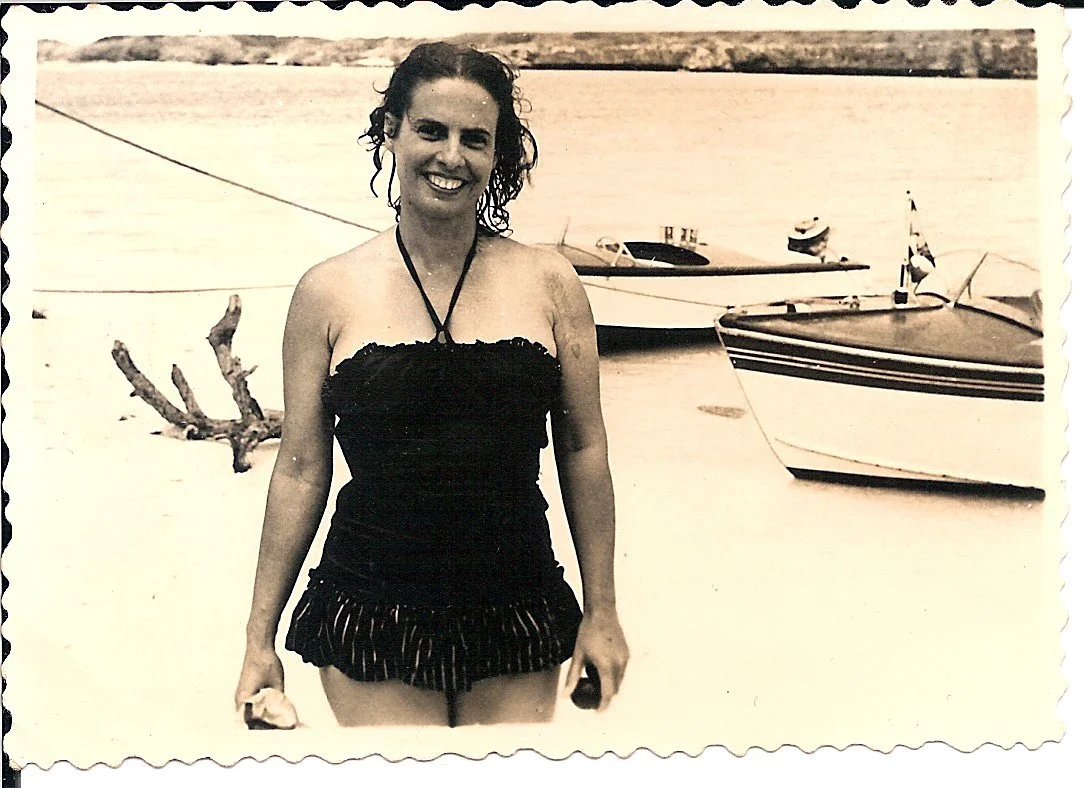“My mother, in her late teens, had been on the island’s swim team – few women in her very protected social group would even venture into the water at that time, but she had learned to swim in Cuba, where she was born. I was proud of her, especially because she could do the crawl when all of us only knew the breaststroke, even without putting our heads in the water.
Her team had been invited to a competition in neighboring Coro, Venezuela, but no chaperone could be found to accompany her – a sine qua non in my family’s circles – and my grandfather refused to let her go. That was the end of her swimming aspirations”.
Twenty years ago, I joined my brother in his routine swim back and forth along the entire length of the Santa Barbara beach while on my yearly family visit to Curaçao. Returning to Jerusalem, I signed up for the local pool and started to swim, teaching myself the crawl. It was only then that I began to realize I was taking up serious swimming in order to make it up for my mother.
And so, in the summer of 2010, (a year after my mother died) I took a course of the Total Immersion technique of freestyle swimming. At first, it was the inward focus that attracted me to TI - taking note of how I am swimming, paying attention to each of my movements, gradually improving my style, observing the tiny happenings between my body and the water that makes the swim so gratifying.
In the silence of the water, I am one body, one mind, moving to my inner pulse, oblivious of the world outside. My body extends into the water, displaces it, as, in turn, the water envelops me, caresses me. My lifeforce flows freely, in perfect synchrony with the glide of my body through the water, bringing me into a state of meditation.
Given TI’s emphasis on streamlined swimming - like a dolphin (its emblem) - while minimizing physical effort, the technique is well suited to long distance swims. The thought of swimming long distance appealed to the hiker in me and brought back the memory of swimming with my brother along the changing landscape of the Curaçao beach.
I followed Diana Nyad, vicariously swimming with her from Cuba, where my mother was born, to Key West, in the US. Crossing a sea, a channel, a distance between two countries without diplomatic relations, carries a symbolic dimension of bridging a gap, meeting a challenge that is not arbitrary, but physical, geographic, and here also diplomatic – and so heightens the sense of completion, of wholeness, on a deeper, psychological level.
The idea of crossing a body of water appealed to me - and in 2012, I joined the 4 km Crossing the Sea of Galilee for the first time. Skipping two years because of travels or the corona pandemic, I have done it every year since.
It gave me the open-water-swimming-bug, and so I participate in all the competitive open water swims along Israel's Mediterranean coast that are held each fall when the sea tends to be calmer, the summer's jellyfish are gone, and the temperature is just right.
I live for these swims. And I swim for my mother.
***



